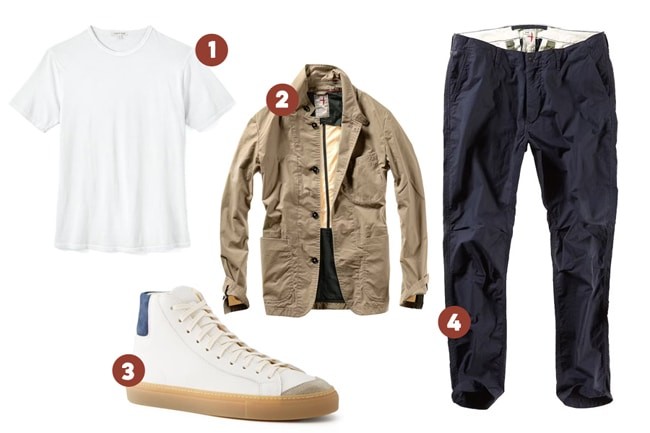Navigating the world of dress codes can feel like deciphering ancient runes. While “black tie” conjures images of tuxedos and “semi-formal” suggests suits and ties, the term “business casual” often leaves men scratching their heads. This guide, therefore, aims to demystify business casual, offering a clear path for even the most sartorially challenged individual. Think of it as a caveman’s simple, yet effective, approach to looking sharp in a professional setting.
Business casual represents a middle ground, a step down from the formality of a suit but a significant leap above weekend wear. It’s about projecting professionalism while maintaining a relaxed and approachable demeanor. It’s the uniform of the modern office, networking events, and anywhere you want to make a good impression without feeling overly stuffy.
Deciphering the Business Casual Code
The essence of business casual lies in striking a balance between comfort and professionalism. The key is understanding how to elevate casual pieces and dress down formal attire.
-
The Trousers: Ditch the jeans (unless explicitly permitted and dark-wash). Opt for khakis, chinos, or dress pants in neutral colors like navy, gray, or brown. Fit is key – avoid anything too baggy or too tight.
-
The Shirt: A button-down shirt is a cornerstone of business casual. Choose classic colors like white, light blue, or subtle patterns. Polo shirts are also acceptable in some environments, especially those with a more relaxed vibe. Avoid graphic tees or anything with loud logos.
-
The Jacket (Optional): A blazer or sports jacket instantly elevates your look. Choose a versatile color like navy, gray, or tweed. The fabric should be appropriate for the season – lighter materials in warmer months, heavier materials in cooler months.
-
The Shoes: Leave the sneakers for the gym. Leather loafers, dress shoes (oxfords or derbies), or chukka boots are all excellent choices. Make sure they are clean and polished.
-
Accessories: A belt that matches your shoes is a must. A watch adds a touch of sophistication. Ties are generally optional, but a well-chosen tie can add personality and polish.
The Caveman’s Business Casual Toolkit: Essential Items
Building a business casual wardrobe doesn’t require a complete overhaul. Start with these essential items:
- Khaki or Chino Pants: Versatile and comfortable, these are a staple of business casual.
- Button-Down Shirts: In white, light blue, and other neutral colors.
- Navy Blazer: A classic piece that can be dressed up or down.
- Leather Loafers or Dress Shoes: In brown or black.
- Dress Socks: Choose colors that complement your outfit.
- Leather Belt: Matching your shoes.
Examples of Business Casual Outfits: From Simple to Sophisticated
Here are a few examples to illustrate the versatility of business casual:
- The Basic: Khaki pants, a light blue button-down shirt, and leather loafers.
- The Elevated: Chinos, a button-down shirt, a navy blazer, and dress shoes.
- The Relaxed: Dark-wash jeans (if permitted), a polo shirt, and chukka boots.
- The Layered: Dress pants, a button-down shirt, a sweater, and dress shoes.
Remember to adjust the formality of your outfit based on the specific context. For example, a more conservative office may require a blazer and tie, while a more relaxed workplace may allow for jeans and a polo shirt.
Avoiding Common Pitfalls: Business Casual Faux Pas
Navigating business casual requires awareness. Here are some common mistakes to avoid:
- Wearing clothes that are too casual: T-shirts with graphics, ripped jeans, and athletic shoes are generally inappropriate.
- Wearing clothes that are too formal: A full suit is usually too dressy for a business casual environment.
- Wearing clothes that don’t fit properly: Baggy or tight-fitting clothes can look sloppy.
- Wearing dirty or wrinkled clothes: Always make sure your clothes are clean and pressed.
- Ignoring the company’s dress code: If you’re unsure about what’s appropriate, ask your HR department or manager.
Conclusion: Mastering the Art of Business Casual
Business casual is about finding the sweet spot between comfort and professionalism. By understanding the key elements of this dress code and avoiding common pitfalls, any man can assemble a wardrobe that projects confidence and competence. So, embrace the challenge, channel your inner caveman with a modern twist, and conquer the world of business casual.
